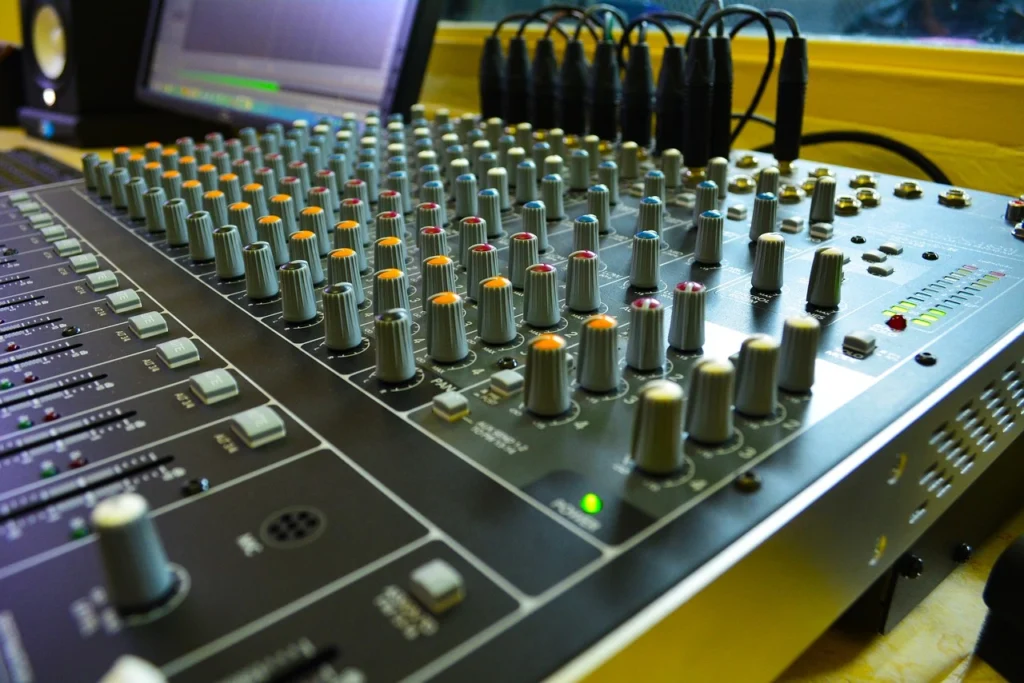
What is the role of sound design?
A creative frontier waiting to be discovered exists in the broad field of audio, where quiet is frequently disregarded: the field of sound design. Our aural experiences, from the heart-pounding intensity of a blockbuster movie to the subtle ambiance of a video game, are greatly influenced by this sometimes overlooked art form. Discover the enchantment that gives sound life as we explore the intriguing field of sound design.

What do you mean by sound design?
Sound design is an essential element in various forms of media, including film, television, theater, and video games. It involves the creation and manipulation of audio elements to enhance the overall experience for the audience.
One of the main goals of sound design is to create a realistic and immersive auditory environment. This involves selecting and editing sound effects, music, and dialogue to complement the visuals and convey the intended emotions and atmosphere.
Sound designers work closely with directors, producers, and other members of the creative team to ensure that the audio elements align with the overall vision of the project. They use various tools and techniques to manipulate sound, such as equalization, reverb, and compression, to achieve the desired result.
In film and television, sound design encompasses a wide range of elements, including ambient sounds, Foley effects (sounds created to mimic everyday actions), and dialogue. These elements are carefully crafted and mixed together to create a cohesive and engaging audio experience.
In theater, sound design plays a crucial role in setting the mood and enhancing the storytelling. It involves the use of sound effects, music, and sometimes live sound manipulation to create a dynamic and immersive experience for the audience.
Video games also rely heavily on sound design to create a realistic and interactive world. Sound designers create and implement sound effects, music, and dialogue that respond to the player’s actions, adding depth and immersion to the gaming experience.
Sound design is the art of creating and manipulating audio elements to enhance the overall experience in various forms of media. It requires a combination of technical skills and creative vision to create a rich and immersive auditory environment.
The Foundation of Sound Design:
Fundamentally, sound design is the painstaking process of generating, modifying, and positioning audio components to improve narrative or elicit particular feelings. Sound design is free to transcend conventional limitations, unlike music composition, which adheres to a set form. This freedom allows designers to create soundscapes that are beyond the bounds of reality.
Key Elements of Sound Design:

The Power of Foley:
Foley is one of the unsung heroes of sound design. This method entails capturing commonplace noises to augment the authenticity of a scenario. The sound of footfall crunching on gravel or leaves rustling in the wind, for example, provides a realistic element to Foley’s work that anchors the viewer in the immersive experience.
Creating Atmosphere:
Imagine a video game or a dimly lit alley without the soft murmurs of the surrounding world or the far-off buzz of traffic. An essential part of sound design is atmosphere, which establishes the scene and gives the story context. Designers have the ability to take listeners to distinct worlds and eras with the deliberate application of ambient noises.
The Art of Synthesis:
Synthesizers and digital technologies are frequently used by sound designers to create distinctive, otherworldly sounds. Synthesis enables sound designers to unleash their creativity and produce sounds that go beyond the confines of the real world, as exemplified by the lightsaber hum in Star Wars and the alien landscapes in science fiction movies.
Musicality in Sound Design:
Sound design and music composition are not the same thing, but they work well together. The narrative can be strengthened and the emotional effect amplified by the thoughtful incorporation of musical elements. A scene can become spectacular with the help of a well-timed musical cue or the soft hum of a background theme.
Challenges and Innovations:
Like every other creative form, sound design has its share of difficulties. Among the challenges faced by sound designers are finding the ideal balance between artistic expression and realism, handling technical limitations, and matching the creative vision of a production. However, new areas for research are being opened by technical breakthroughs like virtual reality and spatial audio, which enable designers to produce more dynamic and immersive experiences.
The Future of Sound Design
The field of sound design will change further along with the advancement of technology. An increasingly engaging and participatory aural experience is being made possible by the development of virtual reality, augmented reality, and 3D audio. Beyond the preservation of conventional sound design principles, the future holds a confluence of imagination and technology that will push the envelope of what is conceivable.
Sound Design Conclusion:
Sound design is a subtle but potent force that forms our emotional connection to the tales we see, but it is frequently eclipsed by its visual counterparts. Sound design gives a depth that goes beyond the screen, enhancing everything from the futuristic sounds of a sci-fi epic to the creaking floorboards in a horror film.
The discipline of sound design will surely become increasingly important in shaping our perceptions of and interactions with audiovisual content as we continue to embrace new technology and push the envelope of creativity. Therefore, the next time you’re engrossed in a film, video game, or virtual environment, stop and consider the beautiful symphony of hidden genius that is sound design.
Check this blog related to this blog for your reference
Read our featured Post What is a daw in music FL Studio New Blog 2023
Can AI Replace Human Musicians? Exploring the Future of Music Creation

Can AI replace human artists? Artificial intelligence in music Can AI Replace Human Musicians? Introduction Artificial intelligence in music (AI) is swiftly changing multiple industries, and the music sector is no different. The incorporation of AI into music production, songwriting, and live performance has opened the door to inventive practices and technologies that question conventional…
How to Use Vocal Compressor?

How to Use Vocal Compressor? Vocal compression is an important step in music production for creating a refined sound. This article covers everything from how to set up your compressor and dial in the optimum settings to advanced techniques like as parallel and side-chain compression. Learn how to control dynamic range, establish voice presence, and…
Difference Between Home Studio and Professional Studio

Difference Between Home Studio and Professional Studio Discover the fundamental distinctions between home and professional audio production facilities. Learn about each type of studio’s equipment, technology, and expenses, as well as the benefits and drawbacks. Whether you’re a hobbyist or a professional, this guide will help you select the best configuration for your requirements. Introduction…





Leave a Reply